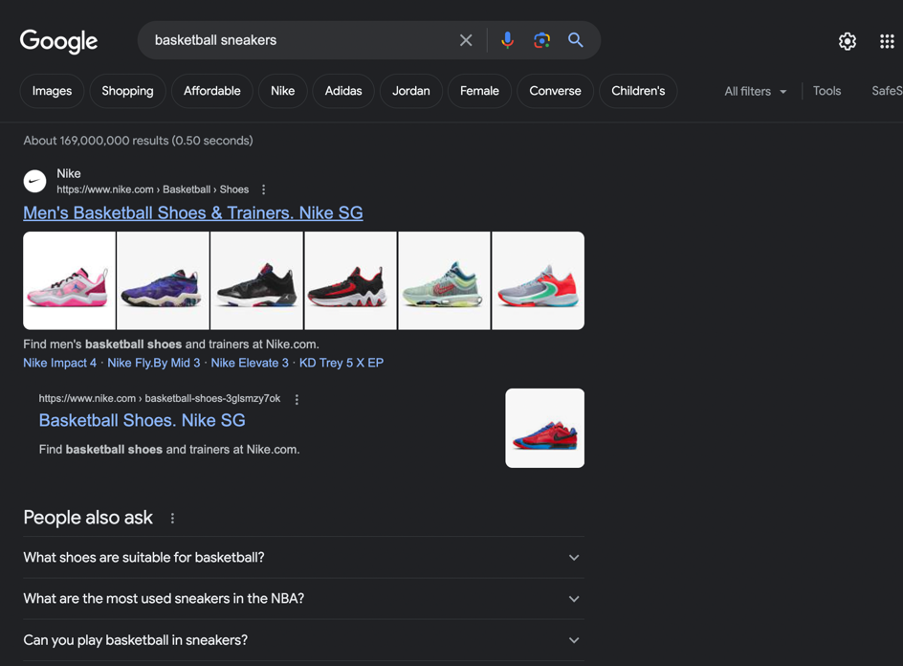With billions of active users across various platforms, social media is no longer just a space for casual interactions; it has become a bustling hub for networking, communication and marketing. As a platform where brands are built and reputations are established, social media management is an essential skill for businesses, influencers and individuals alike.
The prevailing perception amongst the public is that social media is the go-to platform for swift and efficient communication with brands. The convenience of direct messaging has transformed customer expectations. Gone are the days when consumers have to wait on hold for customer service calls. Consumers now have the liberty to share their thoughts and feedback at any time of the day.
The dynamic nature of social media presents a challenge for brands. Unlike advertisements and digital banners, social media demands immediate responsiveness and a mere hour can make or break a brand’s reputation. With a staggering 28% of consumers expecting a response within this timeframe and an additional 37% anticipating a same-day resolution for inquiries or complaints, brands must recognise the urgency in social media interactions. Unfortunately, limitations in resources and unclear working hours can hinder a brand’s ability to consistently meet these expectations. As the lines between consumption and fostering genuine connections are increasingly blurred, how can brands find their voice and tone?
The Voice of Change: Social Media Activism
The consumer landscape has shifted as individuals are gravitating towards brands that embrace genuine values. To remain relevant and influential, brands must take immediate action to realign their communication and strategies to authentically convey their core values and beliefs. Go beyond empty gestures to embrace a long-term approach reflecting a commitment to making a positive impact on society and the environment. Permissive marketing, built on a foundation of purpose and authenticity, is the way forward.
Consumers are becoming increasingly vigilant and performance activism is not only futile but can lead to severe consequences such as public backlash and brand cancellation. It is essential for brands to be sincere in their actions and to avoid jumping on trends merely for the sake of appearance. Connecting with audiences requires brands to infuse content consistently and creatively with what they stand for. This approach will attract like-minded consumers, building a loyal customer base that resonates with a brand’s mission.
Transparency in communications should also be embraced. Do not be afraid to share behind-the-scenes insights and progress on sustainability initiatives, even if they are far from perfection. By showcasing efforts and achievements, a brand can build trust and credibility with consumers.
Patagonia is a shining example of assertive social responsibility. Instead of turning a blind eye to the lax standards of the apparel industry, Patagonia takes tangible actions to create meaningful change. From using recycled materials in their clothing to advocating for environmental causes, the brand’s unwavering dedication to environmentally friendly practices extends to every aspect of their operations.

Source: close-the-loop.be
Boldly challenging the norms of the fashion industry, Patagonia encourages customers to shop wisely and buy less, fostering a less-is-more approach to consumption. In addition, they have pledged to donate a significant portion of their profits to environmental organisations. Patagonia’s efforts have not only garnered them a devoted customer base but have also spurred other brands to recognise the urgency of adopting responsible practices. Patagonia has set the bar high by prioritising ethical sourcing and transparent supply chains and it is time for the rest of the industry to catch up and take a stance in shaping a sustainable future.
The Art of Visibility: Social Media for Search Engine Optimisation
While creating excellent content remains crucial, it is essential to go the extra mile to attract followers. Hashtags might have been a reliable tool for content discoverability, but it is time to rethink their effectiveness in the ever-changing realm of social media.
Instagram now demands the strategic implementation of relevant keywords in captions to boost discoverability. TikTok, another social media powerhouse, has expanded its character limit to grant brands an opportunity to captivate audiences with more extensive and engaging content. Brands can also incorporate native text overlays in videos to reinforce key messages and improve searchability. Furthermore, verbalising keywords at the start can also leave an impactful impression on audiences.
Though there may be hundreds of relevant keywords which can drive potential customers to a website, brands have to exercise assertive selectivity when it comes to choosing keywords to use. Thorough research to find the most effective audience demographic and the keywords they use is non-negotiable. Additionally, the performance of each keyword should be continuously monitored to optimise results. To maintain a competitive edge, exploration for new keywords, especially ones used by competitors, is crucial.
Nike masterfully wields relevant keywords in their website content, product descriptions and marketing campaigns, ensuring that their brand remains prominently visible to sports enthusiasts and fitness-conscious consumers. For instance, keywords related to product categories such as “running shoes” and “basketball sneakers” are used alongside specific product names like “Nike Air Max” and sports like “soccer”. By understanding the search habits of their target audience, Nike crafts compelling content that resonates with customers seeking top-notch performance gear, optimising search engine results and driving traffic to their website and social media platforms. Is it really that surprising then when their digital sales have jumped over 80% from quarter to quarter?

Built on the foundation of a strong brand and enhanced by keywords, Nike’s growth can be attributed to its well-crafted search engine optimization (SEO) strategy.
This reinforces that a proactive and assertive approach to optimise content visibility is a necessity. Brands that stay ahead of the curve by adapting strategies and capitalising on the latest features and trends will undoubtedly stand out.
The Efficient Ally: Social Media as a Customer Service Tool
Social media is more than just uploading a certain number of posts every month. Community management is equally, if not more, important and is an integral aspect of any successful social media strategy.
Implementing effective community management begins with ensuring that every question and feedback from users is acknowledged and attended to. This can be achieved through the utilisation of tools such as the FAQ feature for business profiles to streamline the process of providing quick responses to common queries. Additionally, AI-powered chatbots can be leveraged to alleviate manpower constraints and enable brands to cater to international markets without compromising on responsiveness. Engaging with generic comments through a ‘like’ can also go a long way in fostering a positive and interactive brand image.
Uber, a true industry leader, does not settle for mediocrity when it comes to customer service. Scaled globally with various products ranging from rides to food and freight, slow and inefficient conversations with customer service representatives simply don’t cut it. In their unwavering commitment to providing seamless customer support, Uber has taken action to implement a cutting-edge Policy Engine platform for the standardisation and automated execution of standard operating procedures across all channels. By streamlining customer service operations, Uber ensures that every user from their massive user base receives swift support.

Source: uber.com
Community management should not be an afterthought. Addressing user concerns promptly and efficiently should be a top priority for brands to build lasting connections and foster brand loyalty.
Ahead of the Curve
Time has become an invaluable commodity in our fast-paced world. Yet, the fact that the average person worldwide clocks approximately 145 minutes of their day on social media is a compelling testament to the impact and influence of social media. Social media has integrated itself into our routines, becoming a convenient avenue for news, entertainment and self-expression. In the face of this undeniable presence, brands simply cannot afford to overlook the potential social media holds.
With platforms prioritising user interests and preferences, a one-size-fits-all approach is no longer effective. Instead, brands must discern the unique strengths and characteristics of each platform to tailor content accordingly. Whether it’s leveraging the visual appeal of Instagram, fostering conversations on Twitter or embracing the storytelling potential of TikTok, every channel offers distinct opportunities and challenges. By acknowledging and capitalising on these nuances, brands can cultivate a cohesive and dynamic social media presence that consistently delivers value whilst resonating deeply with audiences.
The expectations for social media are growing and brands must embrace an assertive, forward-thinking approach to meet the ever-increasing demands of their audience. The time for passive observation is over. It is time to seize the opportunities that social media presents.
References
https://www.uber.com/en-SG/blog/customer-automation-platform/
https://www.patagonia.com/social-responsibility/
https://www.kevin-indig.com/nikes-explosive-online-growth/
https://www.forbes.com/advisor/business/social-media-statistics/




